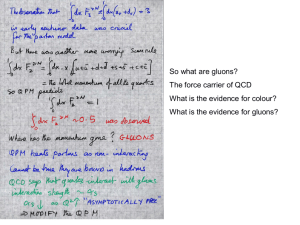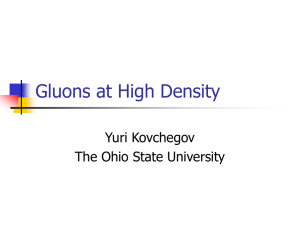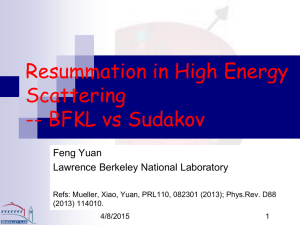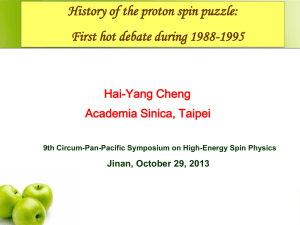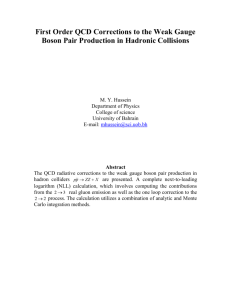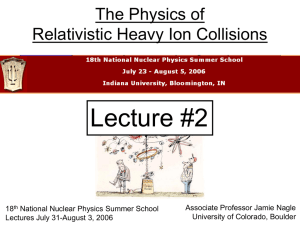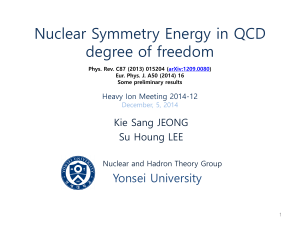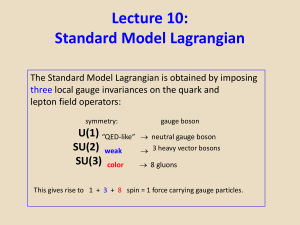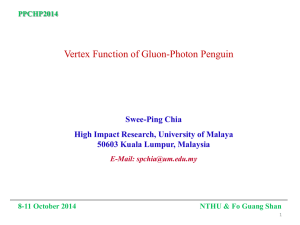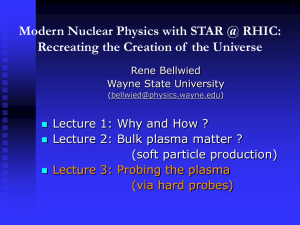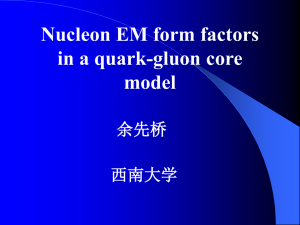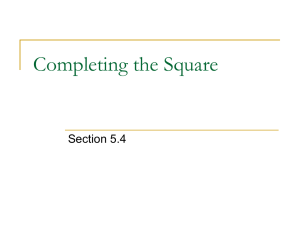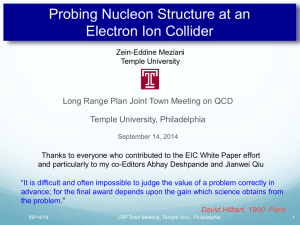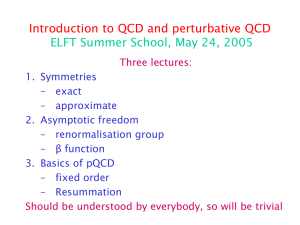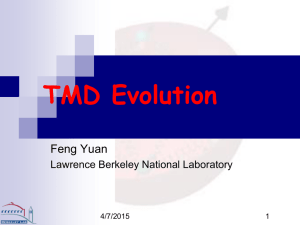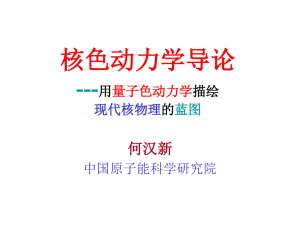Electro-Weak.Unification.and.SM.Final.Form.with.QCD.and.Gluons
advertisement
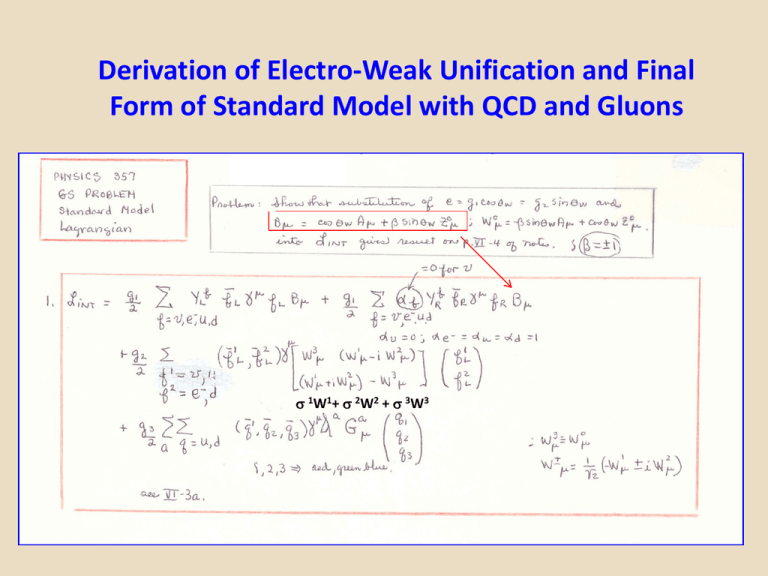
Derivation of Electro-Weak Unification and Final Form of Standard Model with QCD and Gluons 1W1+ 2W2 + 3W3 Substitute B = cosW A + sin W Z0 Sum over first generation particles. up down Left handed only Flavor up Flavor down Flavor changing interactions. Weak interaction terms flavor changing: leptons flavor changing: quarks We want the coefficient for the electron-photon term to be -e f=0 for neutrino and = 1 for others A -e A Z0 Z0 Consider only the A term: ea1 ea2 gives agreement with experiment. Cf = 2T3 = -1 The following values for the constants gives the correct charge for all the particles. A Z0 The Standard Model Interaction Lagrangian for the 1st generation (E & M) QED interactions weak neutral current interactions weak flavor changing interactions + QCD color interactions Weak neutral current interactions Z0 Z0 Z0 Z0 Weak charged flavor changing interactions quarks leptons g2 g2 Quantum Chromodynamics (QCD): color forces Only non-zero components of contribute. To find the final form of the QCD terms, we rewrite the above sum, collecting similar quark “color” combinations. The QCD interaction Lagrangian density Note that there are only 8 possibilities: grrg-g ggb- The red, anti-green gluon The green, anti-blue gluon The gluon forces hold the proton together proton At any time the proton is color neutral. That is, it contains one red, one blue and one green quark. beta decay u d u d d u W- neutron W doesn’t see color proton decay of - -u d - W production from d p u u p- -d -u -u W+ ppp-- The nuclear force u n u d d d u u p W- p u d d d u u Note that W- d + u- = - In older theories, one would consider rather the exchange of a - between the n and p. n Cross sections and Feynman diagrams everything happens here transition probability amplitude must sum over all possible Feynman diagram amplitudes with the same initial and final states . Feynman rules applied to a 2-vertex electron positron scattering diagram Note that each vertex is generated by the interaction Lagrangian density. time spin spin metric tensor Mfi = left vertex function coupling constant – one for each vertex right vertex function propagator The next steps are to do the sum over and and carry out the matrix multiplications. Note that is a 4x4 matrix and the spinors are 4-component vectors. The result is a a function of the momenta only, and the four spin (helicity) states. Confinement of quarks free quark terms free gluon terms quark- gluon interactions The free gluon terms have products of 2, 3 and 4 gluon field operators. These terms lead to the interaction of gluons with other gluons. G normal free gluon term Nf= # flavors G Note sign 3-gluon vertex Nc= # colors Nf quark loop Nc gluon loop momentum squared of exchanged gluon Nf Nc M2quark Nf Nc -7 In QED one has no terms corresponding to the number of colors (the 3-gluon) vertex. This term aslo has a negative sign. Quark confinement arises from the increasing strength of the interaction at long range. At short range the gluon force is weak; at long range it is strong. This confinement arises from the SU(3) symmetry – with it’s non-commuting (non-abelian) group elements. This non-commuting property generates terms in the Lagrangian density which produce 3-gluon vertices – and gluon loops in the exchanged gluon “propagator”. The Higgs Lagrangian Contribution
